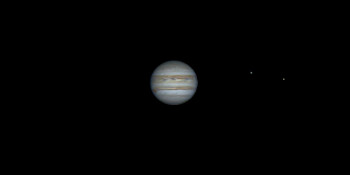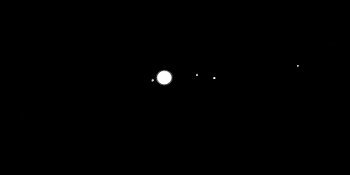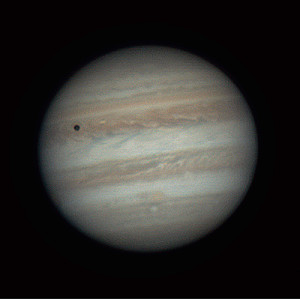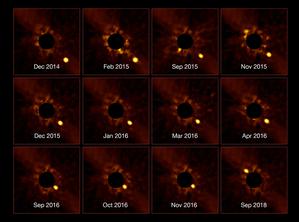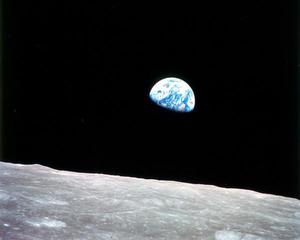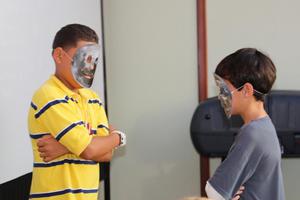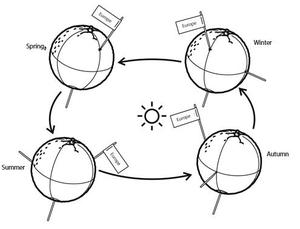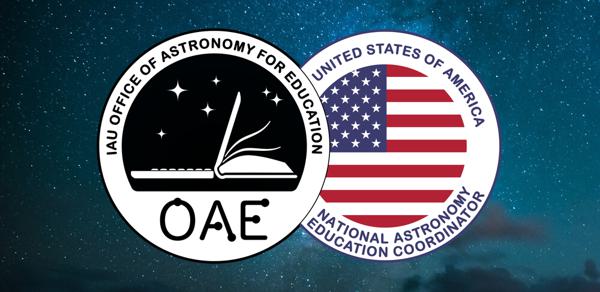Glossarbegriffe: Umlaufbahn
Description: Eine Umlaufbahn beschreibt die Bewegung eines Objekts in einem System um den Massenschwerpunkt dieses Systems, der durch die gegenseitige Anziehungskraft der Objekte im System entsteht. In Systemen wie dem Sonnensystem, in dem der Zentralkörper viel massereicher als die anderen Objekte ist, liegt dieser Massenschwerpunkt innerhalb oder in der Nähe des massereichsten Objekts. Im Fall des Sonnensystems ist das die Sonne. In einem Doppelsternsystem liegt der Massenschwerpunkt, um den sich die Sterne bewegen, oft zwischen den beiden Sternen.
Umlaufbahnen haben in der Regel eine elliptische Form. Dabei liegt der Massenschwerpunkt des Systems in einem der zwei Brennpunkte der Ellipse. Die Größe und Form der Umlaufbahn wird durch die Hauptachse und die Exzentrizität der Ellipse bestimmt. Die Exzentrizität einer Ellipse beschreibt vereinfacht gesagt, wie sehr die Ellipse von der Kreisform abweicht: Je größer die Exzentrizität, desto weniger kreisförmig ist eine Umlaufbahn. Die meisten Planeten im Sonnensystem bewegen sich auf fast kreisförmigen Umlaufbahnen mit einer Bahnexzentrizität sehr nahe bei Null, z. B. Venus (0,007), Erde (0,017), mit Ausnahme von Merkur (0,206) und dem Zwergplaneten Pluto (0,244).
Zugehörige Glossarbegriffe:
See this term in other languages
Term and definition status: The original definition of this term in English have been approved by a research astronomer and a teacher The translation of this term and its definition is still awaiting approval
The OAE Multilingual Glossary is a project of the IAU Office of Astronomy for Education (OAE) in collaboration with the IAU Office of Astronomy Outreach (OAO). The terms and definitions were chosen, written and reviewed by a collective effort from the OAE, the OAE Centers and Nodes, the OAE National Astronomy Education Coordinators (NAECs) and other volunteers. You can find a full list of credits here. All glossary terms and their definitions are released under a Creative Commons CC BY-4.0 license and should be credited to "IAU OAE".
If you notice a factual or translation error in this glossary term or definition then please get in touch.
Zugehörige Medien
Jupiter's Rotation, by Vishal Sharma, India
Bildnachweis: Vishal Sharma/IAU OAE
License: CC-BY-4.0 Creative Commons Namensnennung 4.0 International (CC BY 4.0) icons
Jupiter Moons Movie2, by Nicolas Hurez, Paul-Antoine Matrangolo, and Carl Pennypacker, United States of America
Bildnachweis: Nicolas Hurez, Paul-Antoine Matrangolo and Carl Pennypacker/IAU OAE
License: CC-BY-4.0 Creative Commons Namensnennung 4.0 International (CC BY 4.0) icons
Jupiter, Io and its shadow, by Ralf Burkart, Germany
Bildnachweis: Ralf Burkart/IAU OAE
License: CC-BY-4.0 Creative Commons Namensnennung 4.0 International (CC BY 4.0) icons
The orbit of beta Pictoris b
Bildnachweis: ESO/Lagrange/SPHERE consortium credit link
License: CC-BY-4.0 Creative Commons Namensnennung 4.0 International (CC BY 4.0) icons
Related Activities
Measure the Solar Diameter
astroEDU educational activity (links to astroEDU website) Description: Hands-on activity to measure the Sun by using household materials.
License: CC-BY-4.0 Creative Commons Namensnennung 4.0 International (CC BY 4.0) icons
Tags:
Hands-on
, Scales
, Observing
, Measurement
Age Ranges:
12-14
, 14-16
, 16-19
, 19+
Education Level:
Middle School
Areas of Learning:
Social Research
Costs:
Low Cost
Group Size:
Group
Skills:
Communicating information
, Constructing explanations
, Using mathematics and computational thinking
Blue Marble in Empty Space
astroEDU educational activity (links to astroEDU website) Description: Students are taken on a virtual journey to outer space to experience that we live on a tiny planet that floats in a vast and empty space.
License: CC-BY-4.0 Creative Commons Namensnennung 4.0 International (CC BY 4.0) icons
Tags:
Life
, Hands-on
, Model
, Scales
, Distances
, ISS
Age Ranges:
6-8
, 8-10
Education Level:
Primary
, Secondary
Areas of Learning:
Interactive Lecture
, Modelling
Costs:
Low Cost
Duration:
30 mins
Group Size:
Group
Skills:
Asking questions
, Communicating information
, Developing and using models
Lunar Day
astroEDU educational activity (links to astroEDU website) Description: Through a fun-learning activity, understand why moon always keeps the same face towards Earth.
License: CC-BY-4.0 Creative Commons Namensnennung 4.0 International (CC BY 4.0) icons
Tags:
Lunar day
Age Ranges:
4-6
, 6-8
Education Level:
Primary
, Secondary
Areas of Learning:
Modelling
, Structured-inquiry learning
Costs:
Free
Duration:
30 mins
Group Size:
Group
Skills:
Analysing and interpreting data
, Asking questions
, Communicating information
, Constructing explanations
, Developing and using models
Day and Night in the World
astroEDU educational activity (links to astroEDU website) Description: Compare diurnal and nocturnal animals and experiment with day and night.
License: CC-BY-4.0 Creative Commons Namensnennung 4.0 International (CC BY 4.0) icons
Tags:
Life
, Model
, Animals
, Day and night
Age Ranges:
6-8
, 8-10
Education Level:
Primary
Areas of Learning:
Interactive Lecture
, Modelling
, Social Research
Costs:
Low Cost
Duration:
1 hour
Group Size:
Group
Skills:
Asking questions
, Constructing explanations
, Developing and using models
, Planning and carrying out investigations
Seasons Around the World
astroEDU educational activity (links to astroEDU website) Description: Demonstrate the seasons on Earth using a model.
License: CC-BY-4.0 Creative Commons Namensnennung 4.0 International (CC BY 4.0) icons
Tags:
Hands-on
, Model
Age Ranges:
6-8
, 8-10
, 10-12
Education Level:
Middle School
, Primary
Areas of Learning:
Modelling
, Social Research
Costs:
Medium Cost
Duration:
45 mins
Group Size:
Group
Skills:
Analysing and interpreting data
, Asking questions
, Constructing explanations
, Developing and using models
, Planning and carrying out investigations
